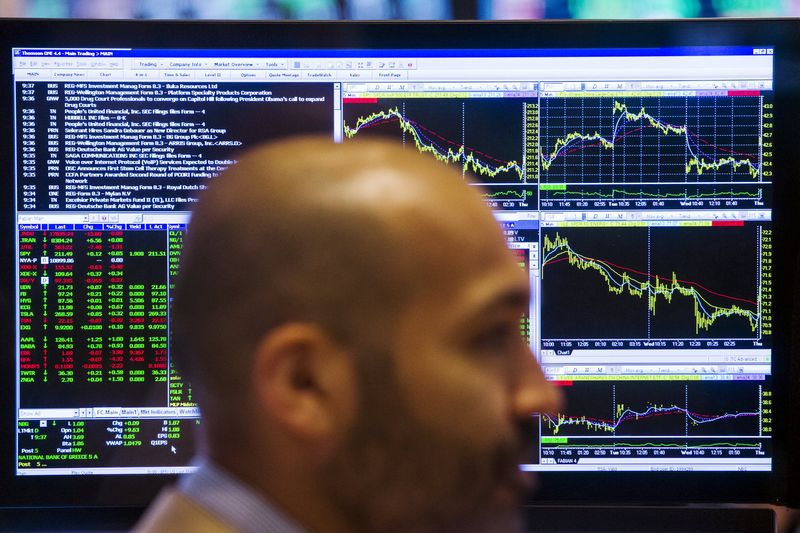By Himanshi Akhand
(Reuters) – Short bets on most Asian currencies hit their highest levels in several months as growing expectations that U.S. interest rates will stay higher for longer dampened appetite for riskier assets, a Reuters poll showed on Thursday.
Bearish positions on the South Korean won, Singapore dollar, Philippine peso and Thai baht rose to their highest levels since mid-October 2022, according to a biweekly poll of 12 analysts.
“Most emerging market risk premiums are low when you consider how much rates have converged, if not overtaken, with those in the US. So the willingness to have open currency positions in certain local fixed income is less compelling,” HSBC said in a note . .
“Much more is needed for emerging market currencies to flourish, including easing the Fed and major central banks and turning global growth toward a convincing rebound,” the report said.
Most of the reaction to the polls came before the U.S. Federal Reserve kept interest rates steady on Wednesday.
Chairman Jerome Powell said rate hikes remain unlikely, but he set the stage for a possible extended hold on policy rates in the 5.25%-5.50% range, pointing to recent disappointing inflation data.
If the Fed doesn’t cut rates this year, Asian currencies may not get a breather and risk another year of depreciation against the U.S. dollar, which has remained strong so far, analysts said.
Christopher Wong, a currency strategist at OCBC, said renewed weakness in the Chinese yuan and yen could also undermine sentiment toward Asian currencies.
Remove ads
.
Bearish bets on the yuan, which recorded a fourth consecutive decline in April, were unchanged from a fortnight ago.
Investors increased their short positions on the Indian rupee after turning bearish on the currency for the first time in four months just two weeks ago.
Short positions on the Indonesian rupiah were the highest in six months, while those on the Malaysian ringgit were the highest since last July.
The rupiah has been trading around $16,200 to the dollar since mid-April and has fallen more than 4% so far this year.
Bank Indonesia raised its policy rate last week to support the rupiah, stepping in to defend the currency amid global uncertainty over the timing of US interest rate cuts and tensions in the Middle East.
“For IDR and INR, we still expect interventions from authorities aimed at curbing volatility in case the USD strengthens,” said Ryota Abe, an economist at Sumitomo Mitsui (NYSE:) Banking Corp.
Analysts at HSBC said the won and baht could recover more than their peers if the Fed begins its rate-cutting cycle in the second half of the year and geopolitical risks are manageable.
The Asian currency positioning poll focuses on what analysts and fund managers believe are the current market positions in nine Asian emerging market currencies: the Chinese Yuan, the South Korean Won, the Singapore Dollar, the Indonesian Rupiah, the Taiwan Dollar , the Indian rupee, the Philippine peso, the Malaysian ringgit and the Thai baht.
The poll uses estimates of net long or short positions on a scale of minus 3 to plus 3. A score of plus 3 indicates that the market is significantly long in US dollars.
Remove ads
.
The figures include positions via non-deliverable forwards (NDFs).
Below are the survey results (US dollar positions versus each currency):
DATE
02-May-24 1.25 1.61 0.89 1.39 1.40 0.49 1.46 1.44 1.39
18-Apr-24 1.25 1.59 0.80 1.32 1.24 0.43 1.42 1.19 1.28
4-Apr-24 1.18 1.09 0.42 1.13 1.17 0.00 1.15 0.62 1.35
21-Mar-24 0.92 0.82 0.33 0.60 0.92 -0.54 1.12 0.47 1.13
7-Mar-24 0.84 0.54 0.25 0.53 0.64 -0.59 1.14 0.52 1.05
22-Feb-24 0.70 0.40 0.20 0.20 0.70 -0.40 1.30 0.30 1.10
8-Feb-24 0.40 0.39 0.41 0.40 0.32 -0.17 1.07 0.28 0.72
25-Jan-24 0.37 0.90 0.28 0.51 0.49 -0.18 1.21 0.50 0.90
11-Jan-24 0.18 0.30 0.02 0.19 0.05 -0.15 0.72 0.09 0.03


